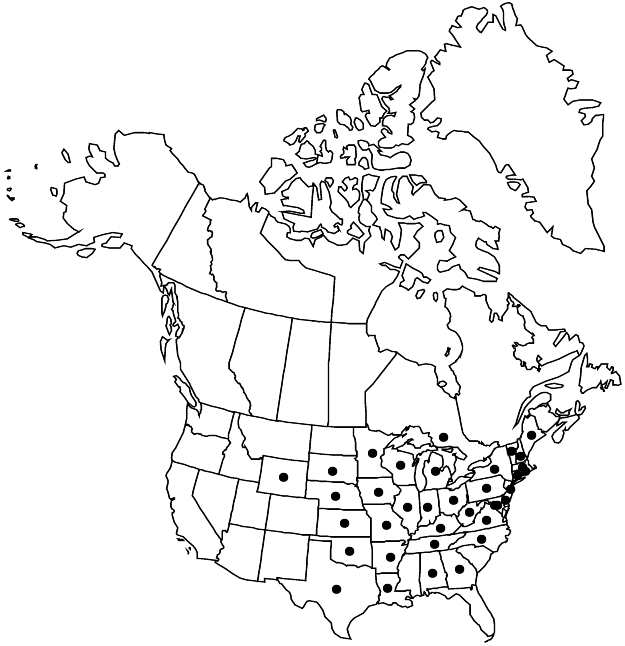Difference between revisions of "Polygonum tenue"
Fl. Bor.-Amer. 1: 238. 1803.
imported>Volume Importer |
imported>Volume Importer |
||
| Line 54: | Line 54: | ||
|publication year=1803 | |publication year=1803 | ||
|special status=Endemic | |special status=Endemic | ||
| − | |source xml=https:// | + | |source xml=https://bitbucket.org/aafc-mbb/fna-data-curation/src/2e0870ddd59836b60bcf96646a41e87ea5a5943a/coarse_grained_fna_xml/V5/V5_1159.xml |
|subfamily=Polygonaceae subfam. Polygonoideae | |subfamily=Polygonaceae subfam. Polygonoideae | ||
|genus=Polygonum | |genus=Polygonum | ||
Latest revision as of 23:08, 5 November 2020
Herbs. Stems erect, green or brown-ish, simple or branched from below middle, not wiry, 5–50 cm, glabrous or papillose-scabridulous. Leaves uniformly distributed, articulated to ocreae, basal leaves caducous or persistent, distal leaves abruptly reduced to bracts; ocrea 6–15 mm, glabrous or papillose-scabridulous, proximal part cylindric, distal part soon disintegrating into a few brown fibers; petiole 0.1–1 mm; blade 1-veined, with 1 pleat on each side of midrib, narrowly lanceolate to linear, 25–40 × 1–8 mm, margins usually flat, papillose-denticulate, apex mucronate or cuspidate. Inflorescences axillary and terminal, spikelike, slender, elongate; cymes spaced along branches, 1–2(–3)-flowered. Pedicels enclosed in ocreae, erect, 1–1.5 mm. Flowers closed; perianth 2.5–4.2 mm; tube 15–22% of perianth length; tepals overlapping, green, often brownish when dried, with pink or white margins, petaloid or sepaloid, elliptic, cucullate, navicular, apex rounded; midveins usually unbranched, rarely branched; stamens 8. Achenes enclosed in or slightly exserted from perianth, black, elliptic to oblong, 2.3–4 mm, faces subequal, shiny, smooth or minutely striate-tubercled near edges and apex. 2n = 20.
Phenology: Flowering Jun–Oct.
Habitat: Dry acid soils in exposed sites
Elevation: 100-1000 m
Distribution

Ont., Ala., Ark., Conn., Del., D.C., Ga., Ill., Ind., Iowa, Kans., Ky., La., Maine, Md., Mass., Mich., Minn., Mo., Nebr., N.H., N.J., N.Y., N.C., Ohio, Okla., Pa., R.I., S.Dak., Tenn., Tex., Vt., Va., W.Va., Wis., Wyo.
Discussion
Selected References
None.